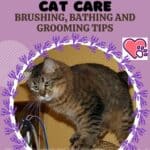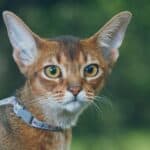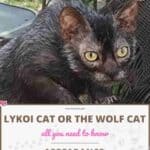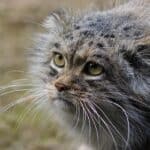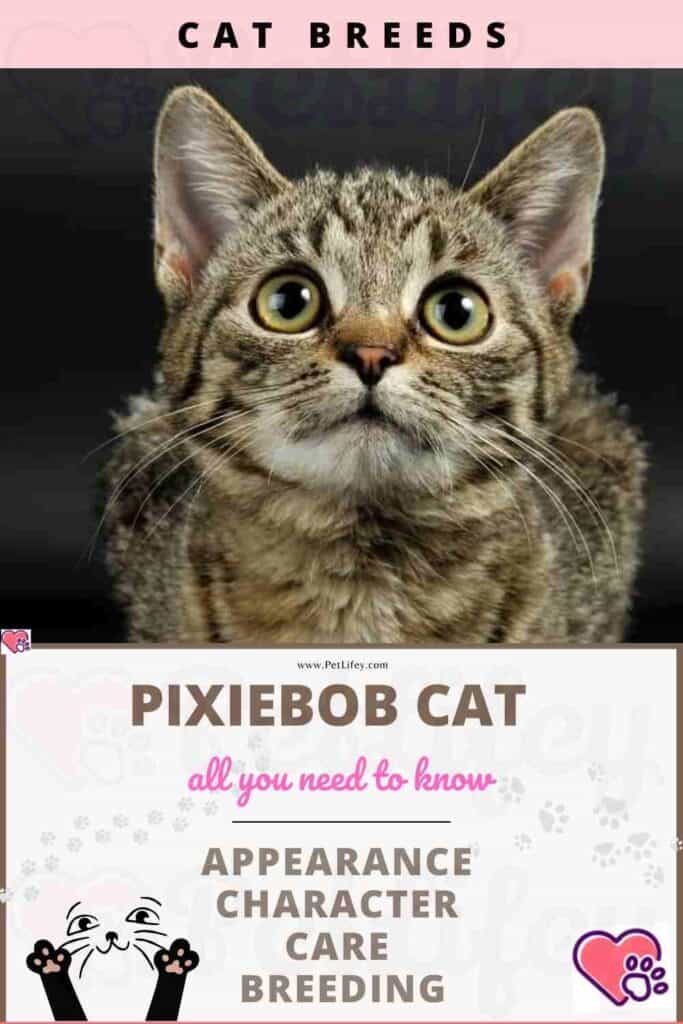
When the Pixiebob cat was first shown at cat shows, many questions were raised about the legitimacy of its presence, as its strong resemblance to the wild Bobcat, which belongs to the large Lynx family, made its participation in a difficult exhibition of domestic animals, in the eyes of some.
Genetic studies confirmed its partial descent from the wild cat, but they brought to light the fact that it was possible to obtain hybrids between the two species, and especially domestic hybrids. This cat is characterized by a large size, short tail, large feet and a wild appearance combined with a domestic character.
The origins of the Pixiebob Cat
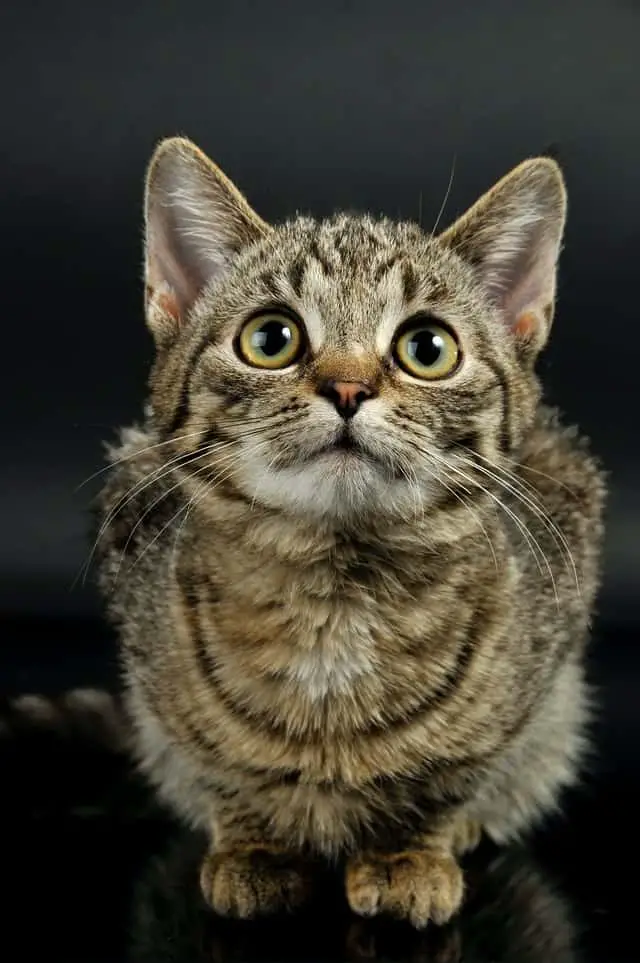
Carol Ann Brewer, of Stone Island Cattery, Wash., Taking inspiration from the Pixiebob legend, began breeding work in 1985 that would lead to the creation of cats with great gentleness at the same time as of apparent savagery.
Alone among all the existing breeds, the Pixiebob cat has polydactyl feet, that is, with a number of toes higher than normal.
This was also one of the sources of problems with the exhibition commissions, because we must not forget that one of the significant traits of wildness is precisely polydactyly.
This is why this cat was first refused, even if today, the Pixiebob breed is recognized today (but still not in France by all associations), even if it has up to seven fingers. per foot, instead of the five regulation for the previous ones and four for the posterior ones.
Appearance of the Pixiebob Cat
The ideal Pixiebob cat should look as close as possible to the American wild cat, the Bobcat. He must be powerful, with a well-developed chest, strong bones and perfect musculature. The Pixiebob has a peculiar pensive expression that comes from its prominent forehead, which makes its eyes more sunken and gives that aspect to its gaze.
The nose is broad and the truffle color brick; the cheeks and chin are well developed; the tips of the ears have a tuft of very pointed hairs, like that of the Lynx. The hair, quite dense and raised from the body, can be short or long; on the sides of the face and on the chin, it is longer, as in the wild cat. Another feature is its short tail no lower than the hocks, carried in a relaxed position rather than above the body.
Coat color of the Pixiebob Cat
The Pixiebob cat’s dress comes in all shades of a brown tabby; its design is spotted. Although a reddish tone on the dress can be accepted as it makes it look warmer, the base color should be sand beige.
The character of the Pixiebob Cat
Even though the Pixiebob cat can live completely independently, it is actually quite lazy and so intelligent that it has realized that it is more convenient for them to receive its food from its master instead of going to hunt it in the sea. Forest.
The ideal life, for them, comes down to a cozy basket by the fireplace, surrounded by people ready to spoil them. Its wild appearance should not be confusing: the Pixiebob is a tender cat who attaches themselves to all members of the family and gives love in exchange for love.
Hug:
This cat will undoubtedly have its moments of cuddling and will let you know when it wants your hugs. You will undoubtedly appreciate the texture of its woolly coat.
Player:
Make sure to offer this feline interactive play sessions, as well as independent activities, every day.
Calm:
It has a reputation for being rather home-like… but variations exist within individuals of the same race. It remains to be seen whether yours will be homey or not!
Intelligent:
It is quite able to use its brain when the situation calls for it. Don’t underestimate them, it might surprise you!
Fearful / suspicious of strangers:
It is said to be a fairly sociable cat. It will probably be next to you to greet the guests!
Independent:
This cat can handle your absences very well. By providing them with independent activities, such as food fortification, it will be able to take care of and be patient until your return.
Behavior of the Pixiebob Cat
Talkative:
It is not known to be talkative, but it will be able to make conversation with you on occasion, with chirps and coos.
Greedy / glutton:
This feline is rather big and strong. It is therefore necessary to offer them food in sufficient quantity to satisfy them.
Although it is not known to be greedy, you still have to be careful to prevent its muscles from covering themselves with fat because of food intake that would exceed its basic caloric needs.
Need for exercise:
It needs to exercise like all cats. Periods of daily play, combined with games where it can play alone, will satisfy them. In addition, being a powerful and agile cat, its environment must be adapted to its needs. High installations, such as shelves on the walls, are ideal.
Runaway:
You should always be careful with doors and windows, but it is a cat who tends to appreciate the comfort of its home.
Compatibility of the Pixiebob Cat with other animals
The Pixiebob and the Dogs:
With an adequate environment adapted to the needs of the cat, the latter will be able to live very well in the company of a dog and develop a great relationship.
The Pixiebob and Other Cats:
With the right introduction, this cat will most likely get along very well with another cat.
The Pixiebob and the Children:
This cat makes a good companion for children. It will appreciate the periods of play with them, but also the naps they will share together!
The Pixiebob and the Elderly:
The rather quiet temperament of this cat may very well suit a calm person who will still be able to offer them the stimulation it needs.
Price of the Pixiebob Cat
On average, the purchase price of a Pixiebob kitten in breeding is between 1100 USD and 1800 USD , the price often varying according to the line, the breeding, the age or even the sex. For the monthly budget, it will take an average of 50 USD / month to meet its needs, by offering them a quality diet and making sure to keep them in good health.
Maintenance of the Pixiebob Cat
Grooming:
Weekly brushing is sufficient, both for the short-haired and long-haired varieties.
Hair Loss:
This cat loses very little hair.
Food of the Pixiebob Cat
It is important to consult with your veterinary team to determine the best food to offer your Pixiebob to maintain muscle mass and athletic body.
Health of the Pixiebob Cat
Life expectancy:
The Pixiebob has a life expectancy of between 12 and 20 years with an average of 14 years .
Resistant / Robust:
Thanks to its thick fur, this cat is resistant to cold temperatures. Conversely, it supports heat less well.
Tendency to gain weight:
This cat has no predisposition to be overweight compared to other breeds.
Common illnesses:
There are no specific illnesses reported for this breed.
The Pixiebob can however one day develop the same pathologies as any other cat, such as oral pathologies .
Reproduction:
No marriage is allowed.
Some sources mention that it is not recommended to breed two Polydactyl Pixiebob because it could cause deformities in the feet. No scientific study corroborates its claims.
Good to know
With the change of season, you will notice differences in the coat of your Pixiebob as much in its texture as in its length and its color. During the summer season, the coat is shorter and the mottled pattern is clearly visible.
And, in the winter season, the coat is denser and this reinforces the tagging to give the impression that a thin layer of frost covers its coat.
Did you know that this breed is the only one for which polydactyly is admitted and that the maximum number of fingers allowed is 7.

